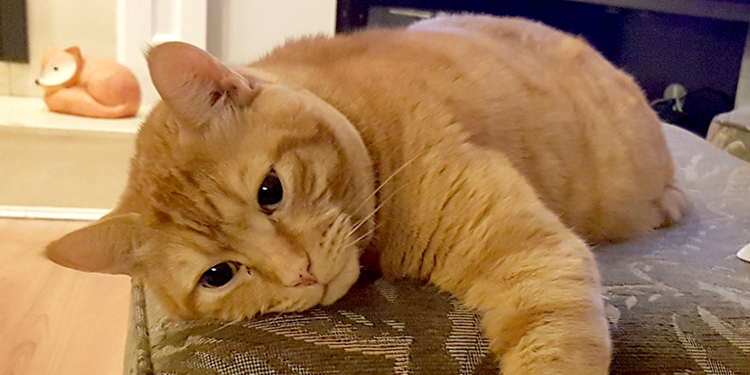Latest News
Without speech, pets convey pain through behaviour

Published 10:44 PDT, Thu November 1, 2018
We didn’t know that our cat, Toby, was in
pain or even discomfort. Nothing seemed out of the ordinary. Then we took him
for a routine dental procedure and Toby’s personality changed.
When we got him home, it was clear to the
entire family that something had changed. He seemed like a different cat. His
enthusiasm and energy were greater and, rather than lethargic, he was playful
and cuddly. He had been in pain and we didn’t even know it. Freed of what must
have been some nagging, chronic toothache, Toby was clearly enjoying life more.
This was good news, of course. But it was
also alarming. As animal lovers, we all want to know that our pets are healthy
and happy. It was a wake-up call for us to remember that animals not only can’t
tell us in words when they are troubled, sometimes even their behaviours don’t
give us the clues we need.
When I shared this story with a friend, he
told me a very sad story (with a happy ending). A family had no idea their dog
was suffering from a painful condition. Then a painter who was working on the
exterior of their house told them that whenever the family was away, the dog
howled—not from separation anxiety, but clearly due to pain. They took the dog
to the vet and the condition was remedied fairly simply.
“Many dogs are incredibly stoic,” Dr. Assaf
Goldberg told me. “They want their people to be happy and so they don’t want to
‘complain.’ It’s an incredible and challenging part of this amazing
inter-species relationship we have.”
Dr. Goldberg works at the RAPS Animal
Hospital, which is the full-service, not-for-profit veterinary hospital we
operate, the revenue from which is reinvested into all the programs RAPS
deliver as an organization, including subsidized animal healthcare.
“Of course, every dog is different,” Dr.
Goldberg added. “There are so many ways a dog or cat may be telling you
something is wrong.”
Among the most obvious is a sharp change in
behaviour. Eating habits might change—but it’s also important to note that they
might not. Like people, a sore hip or a skin condition isn’t necessarily going
to affect appetite, said the vet. Aggressive behaviour that is out of character
is an obvious sign. So is anti-social behaviour in an animal that is usually
outgoing.
“Are they not greeting you at the door
anymore?” asked Dr. Goldberg. “Do they seem to be avoiding you when they
usually can’t get enough attention?”
Sleep habits can also be an indicator—and not
always in obvious ways, either. Having trouble sleeping can be a sign. But so
can sleeping more than usual—it could mean your dog or cat’s body is trying to
heal itself, or they may be finding it difficult to move and sleep is the
symptom.
“Self-grooming can be a sign, too,” said Dr.
Goldberg. “Licking themselves is comforting for cats and dogs and so excessive
grooming may indicate problems. Changes in breathing patterns, unusual posture,
trembling—there are so many diverse ways your cat or dog may be indicating a
problem.”
Toby’s dental issue was a reminder to my
family to watch closely to see what our pets might be telling us. They can’t
speak our language, so we need to try to understand theirs.
Eyal Lichtmann is executive director and CEO
of the Regional Animal Protection Society.
































